How to Check If a Battery Is Charged: 2 Ways
Many times, we store new batteries out of their original packaging next to others that have already been used, but when a wall clock or remote control stops working and we need to replace its batteries, we find ourselves with a problem: we don’t know which ones work, and we waste time trying them out one by one until the device turns on again.
5-Minute Crafts will show you 2 quick and easy methods to determine if a battery is still usable. In addition, at the end of the article, you’ll find a bonus section on how to conserve batteries and extend their life.
Method 1: Drop it vertically.
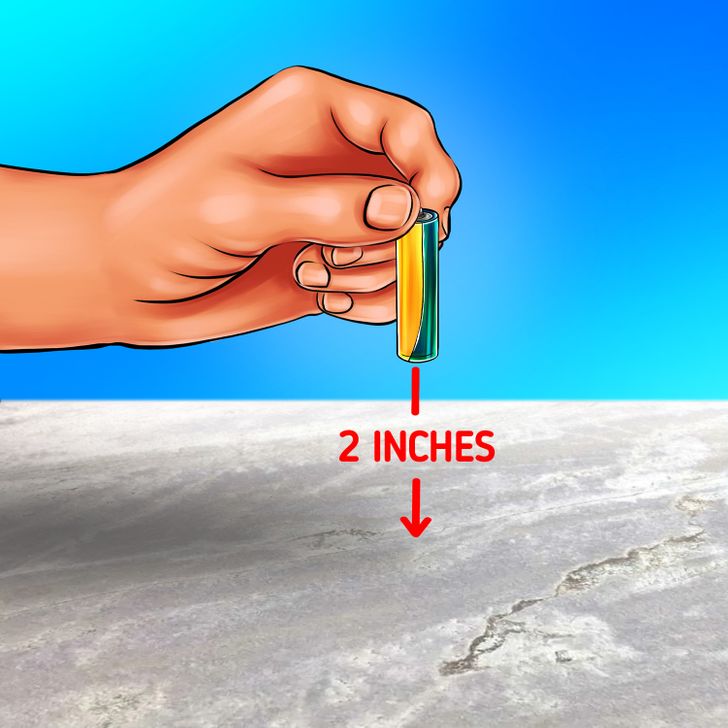
1. Hold the battery vertically at a height of 2 inches (5 cm) on a flat, hard surface. Be sure to hold it with the positive side up — the flat side of the battery should be facing down.
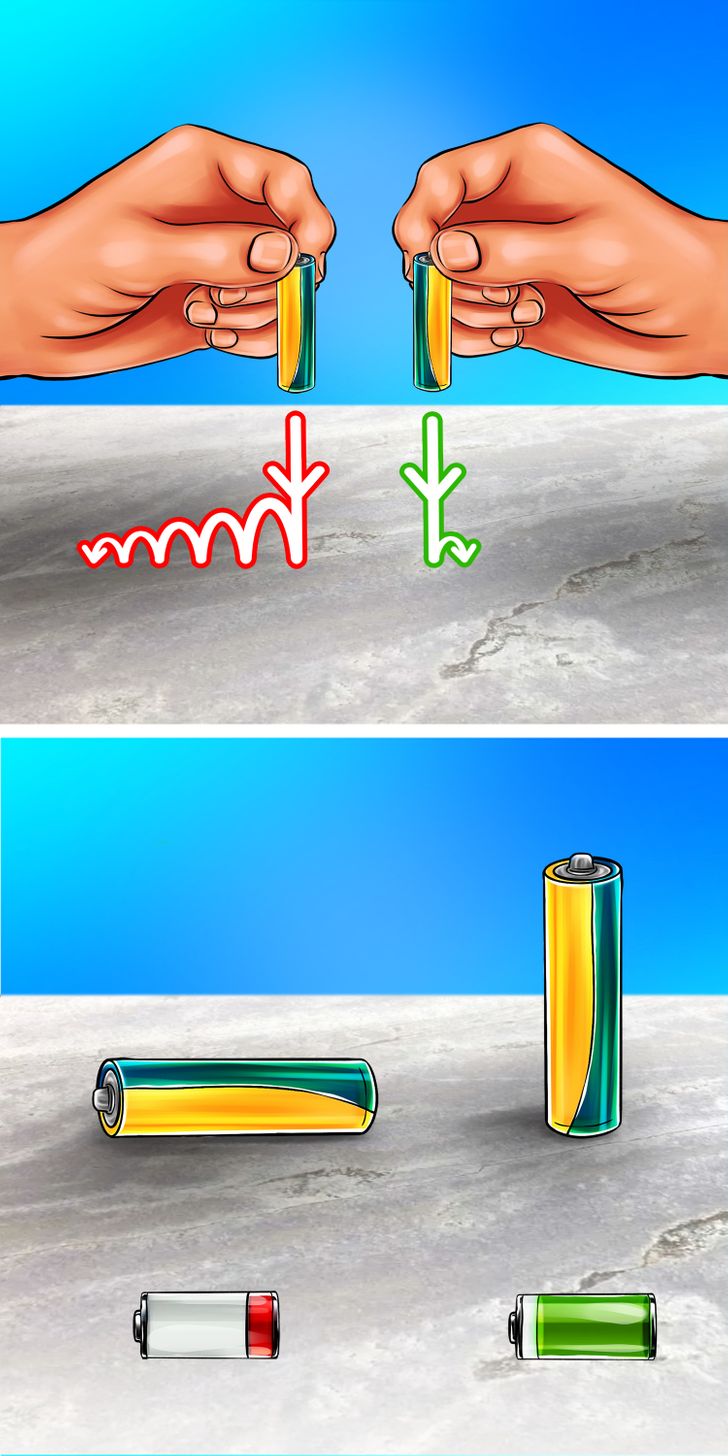
2. Drop it on the flat surface and identify the following:
- If the battery is charged, it will fall vertically without bouncing.
- If it’s discharged battery, it will bounce once or several times before falling completely. That does not mean it is completely depleted, but it’s most likely starting to lose its charge, so it will have a shorter lifespan.
Batteries consist of 2 metal electrodes immersed in a solid liquid called an electrolyte. This is a conductor of ions that decreases with use. This is how we can deduce the charge of the battery according to its weight: the less heavy one will have a harder time maintaining its balance.

⛔ Do not perform this trick on wood, paper, or flex-foam surfaces, as these materials absorb energy, and objects don’t bounce off them well.
✅ Test them on a metal table, glass, or marble surface.
Method 2: Use a multimeter.
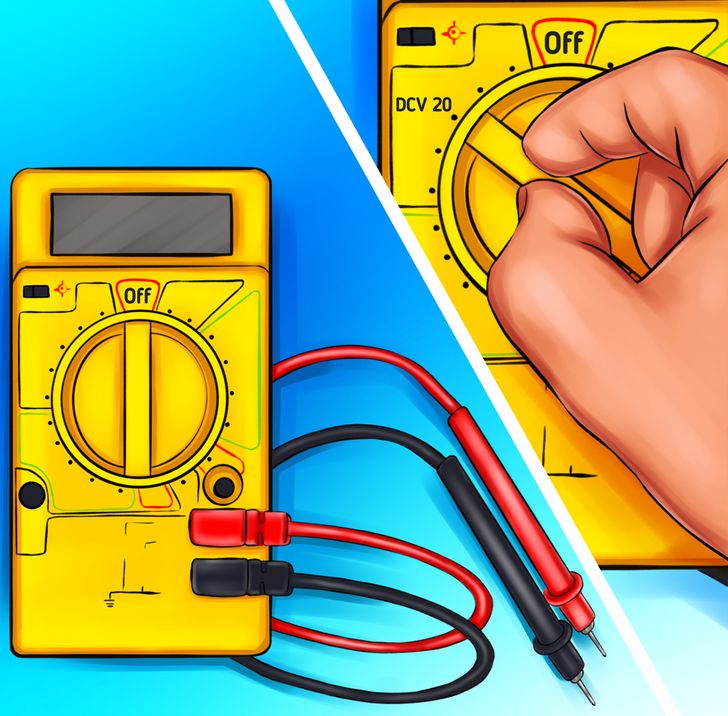
1. Before making a measurement, turn it on and turn the knob to measure the direct current (DC). Verify this setting according to the manufacturer’s manual.
On some devices, you’ll need to choose a maximum level for the current to be measured. On most, the lowest setting is 20 volts, which is sufficient for all common batteries.
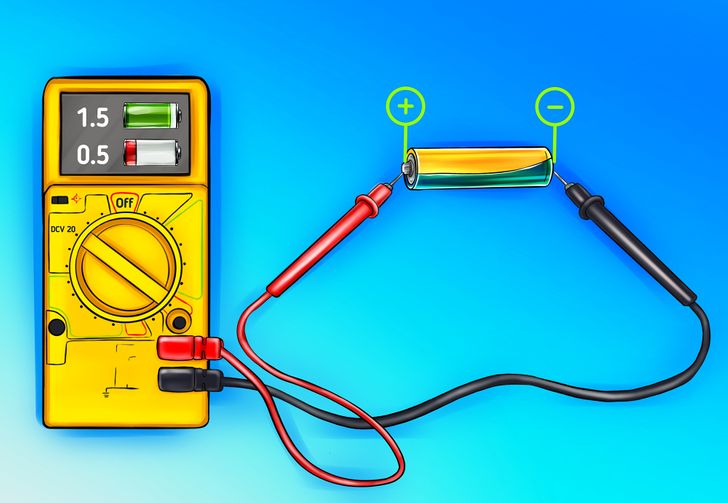
2. Take both ends of the meter and place them on each side of the battery. The tip of the red lead should press lightly on the positive side of the battery, and the tip of the black lead on the negative side.
The value that the display registers will measure the battery voltage. If the charge indicates a volt below the value on the battery label, you should replace the battery.
New, charged batteries (AA, AAA, C, and D) have a charge of 1.5 volts. In contrast, a 9V battery has 9 volts.
Bonus: how to store batteries correctly
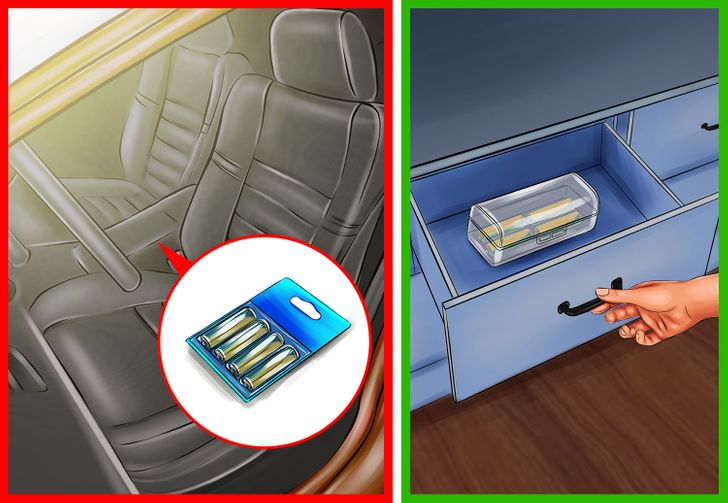
⛔ The interior of a vehicle is one of the worst places to keep batteries, even if the packaging is sealed. The manufacturers of these batteries recommend keeping them away from extremely hot environments since this can cause them to lose their charge and even cause leaks or ruptures.
✅ Store batteries at room temperature in a cool place away from direct sunlight. Leave them in their own packaging if they’re sealed. If they’re opened, put them inside a plastic, airtight container.
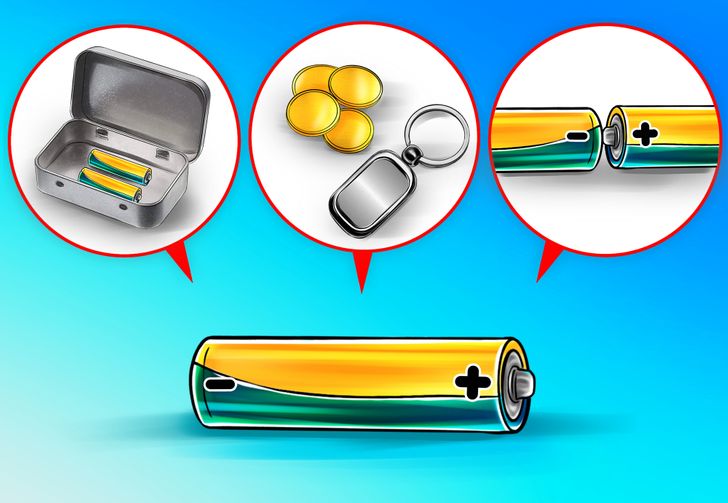
⛔ Batteries may conduct electricity when they come in contact with metal. They’ll also discharge rapidly and generate heat, which could cause a fire.
Do not store them loose inside a metal container.
Do not store them together with coins or other metal objects.
If you keep them together, back-to-back, make sure that the positive terminals do not touch the negative terminals of other batteries. To avoid this, you could cover the terminals with adhesive or insulating tape.